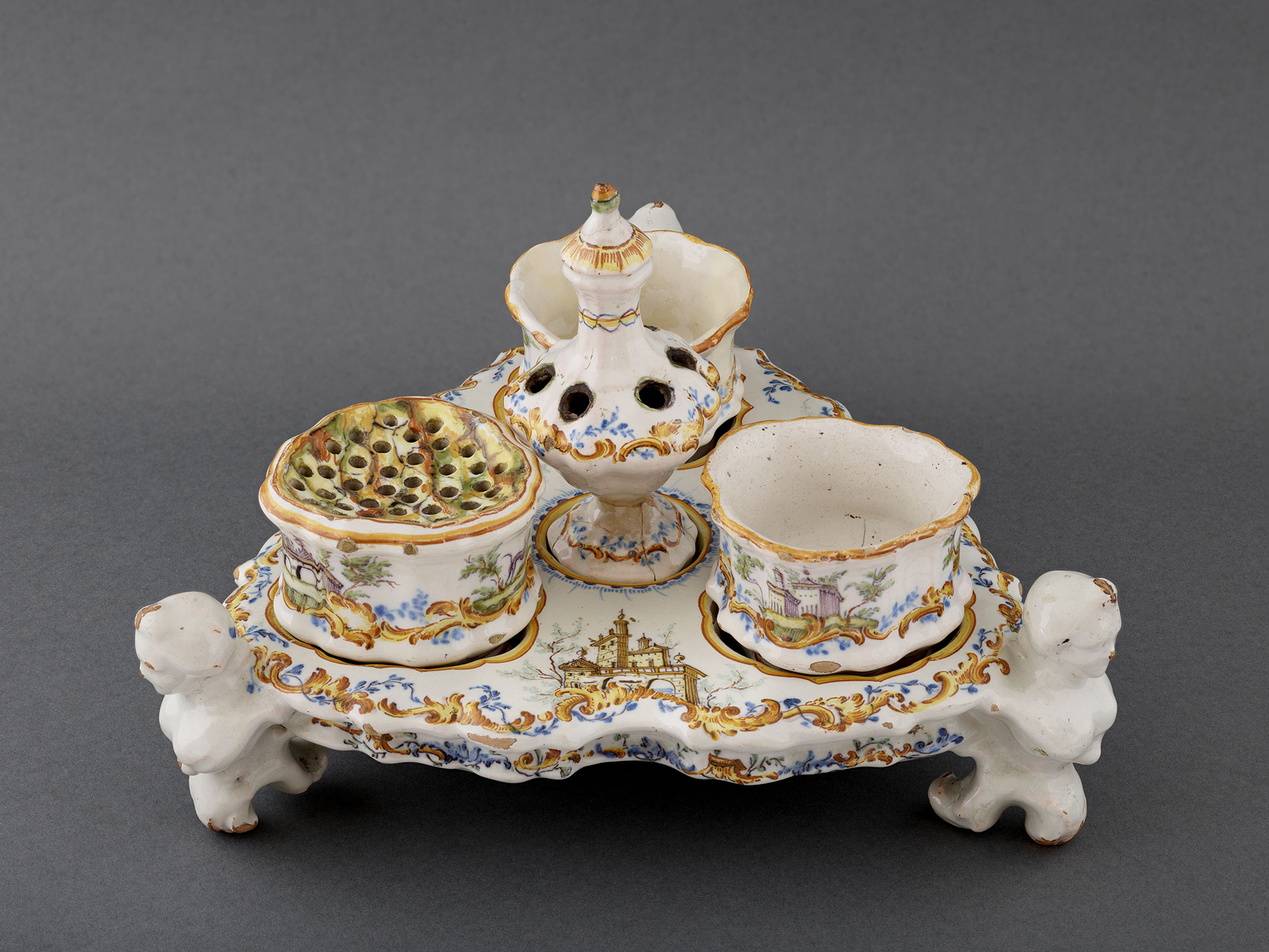
Manufactura de Alcora
Writing set
“Natural countries with characters” series (1784-1788)
WORK INFORMATION
Ceramic, polychrome earthenware, 26.5 x 26.5 cm
The Alcora manufactory was founded in 1727 by the 9th Count of Aranda on land he owned in what is now the province of Castellón. The aim was to create a luxury earthenware and porcelain factory that would compete with foreign manufactories. Royal privileges, including tax exemption on the export of pieces and the free entry of materials from abroad, allowed this manufactory to operate until the middle of the 19th century despite the fact that it barely made any profits.
Throughout its existence, the factory became a model of organisation and a point of reference in terms of aesthetics thanks to the recruitment of foreign specialists, artists and “secretists” who claimed to know the secret of porcelain manufacture. In addition, the creation of an apprentice academy enabled the manufactory to continue to provide top quality production.
This writing set belongs to the establishment’s second period (1749-1786), which began when Pedro Pablo, son of the 9th Count of Aranda, inherited the factory. The 10th Count was the Spanish ambassador in Paris and was in contact with the Encyclopaedists. His curiosity led him to search for the formula for porcelain, but he only managed to obtain a material that was similar to French soft paste and English pipe clay.
The complexities of the factory became a source of unrest, leading to resignations and the creation of other workshops that tried, without much success, to imitate Alcora ceramics. For this reason, the Alcora factory requested an order from the King allowing it to identify its products with an “A”. In 1789, the “fabriquetas” [“pottery shacks”] – as they were derisively called – were closed down by royal decree.
Stylistically, the Alcora writing set belonging to the Banco Santander Collection features the decoration of the “natural countries with characters” series, depicting landscapes, groups of buildings and figures framed by rocaille borders. This is one of the series described by Mamés Lalana (manager of the Alcora factory from 1766) in a memorial he wrote in 1775 detailing the models introduced in the factory from 1764. The rectangular writing sets with lids, typical of the first period, took on a triangular shape with three anthropomorphic feet during the second period. They have four recesses, two for the inkwells, one for the sandbox and the central one, in the form of a faceted baluster, for the pens. The inkwells, sandbox and pen-holder are signed on the back with the “A”, the manufacturer’s trademark from 1784.

